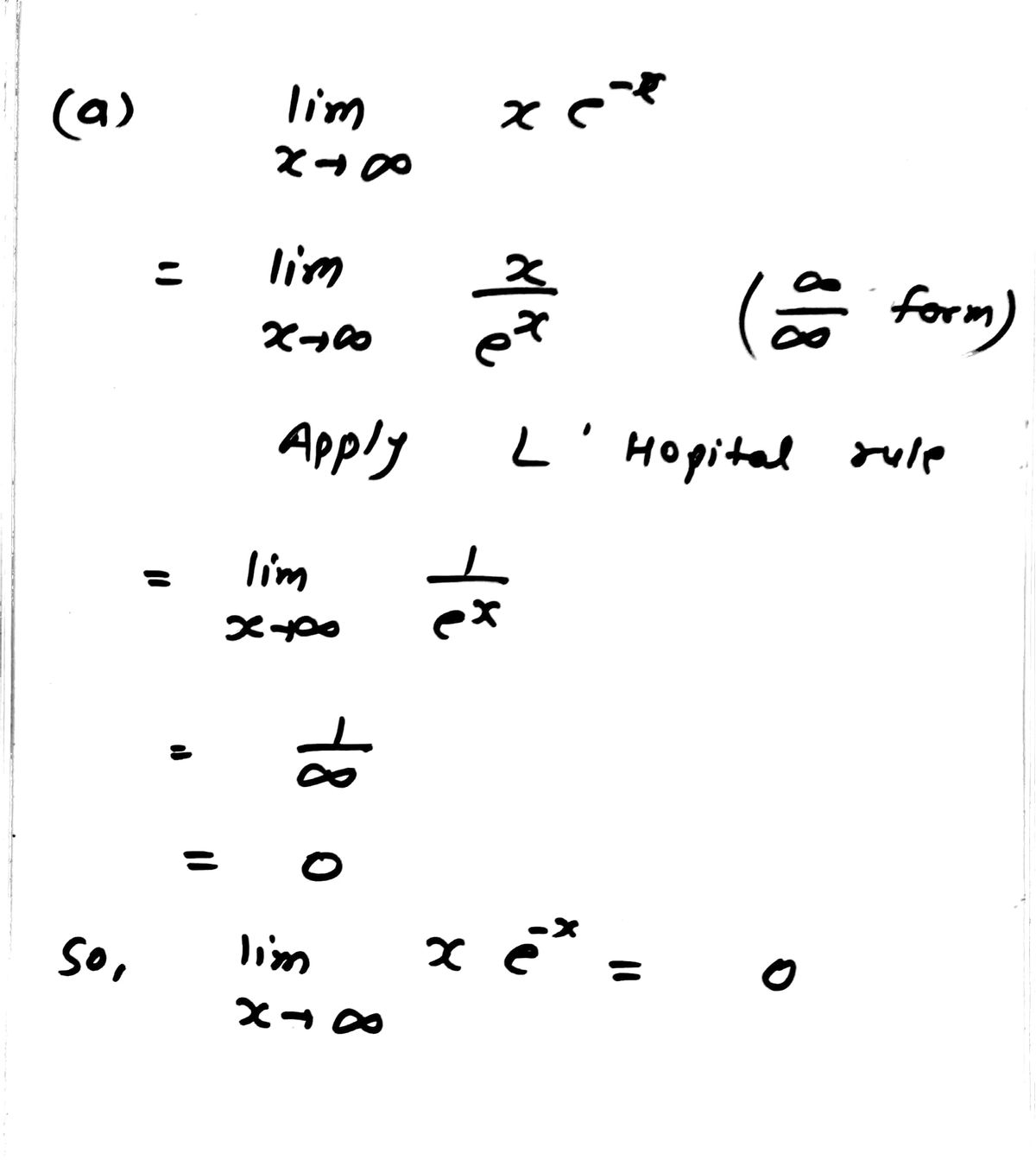Problem 3. indeterminate form. Follow the directions to find the limits in non-standard -x (a) lim xe x→∞ Observe that this the limit has the form ∞.0 if you try to evaluate directly. Here, we'll change this form ∞ .0 to ∞/∞. Move the exponential function to the denominator and find the limit. 1 (b) lim -1) x→0 sin x Note that this limit is in the form ∞ - ∞ if x comes from the right, or -∞ +∞ if x comes from the left. Either way, it must be reformulated. (i) Find a common denominator and do the fraction arithmetic. The new limit should be in the indeterminate form 0/0. (ii) Compute the new limit.
Problem 3. indeterminate form. Follow the directions to find the limits in non-standard -x (a) lim xe x→∞ Observe that this the limit has the form ∞.0 if you try to evaluate directly. Here, we'll change this form ∞ .0 to ∞/∞. Move the exponential function to the denominator and find the limit. 1 (b) lim -1) x→0 sin x Note that this limit is in the form ∞ - ∞ if x comes from the right, or -∞ +∞ if x comes from the left. Either way, it must be reformulated. (i) Find a common denominator and do the fraction arithmetic. The new limit should be in the indeterminate form 0/0. (ii) Compute the new limit.
Calculus: Early Transcendentals
8th Edition
ISBN:9781285741550
Author:James Stewart
Publisher:James Stewart
Chapter1: Functions And Models
Section: Chapter Questions
Problem 1RCC: (a) What is a function? What are its domain and range? (b) What is the graph of a function? (c) How...
Related questions
Question

Transcribed Image Text:Problem 3. Follow the directions to find the limits in non-standard indeterminate form.
(a) \(\lim_{x \to \infty} xe^{-x}\)
Observe that this limit has the form \(\infty \cdot 0\) if you try to evaluate directly. Here, we'll change this form \(\infty \cdot 0\) to \(\infty/\infty\). Move the exponential function to the denominator and find the limit.
(b) \(\lim_{x \to 0} \left( \frac{1}{\sin x} - \frac{1}{x} \right)\)
Note that this limit is in the form \(\infty - \infty\) if \(x\) comes from the right, or \(-\infty + \infty\) if \(x\) comes from the left. Either way, it must be reformulated.
(i) Find a common denominator and do the fraction arithmetic. The new limit should be in the indeterminate form \(0/0\).
(ii) Compute the new limit.
Expert Solution
Step 1

Step by step
Solved in 2 steps with 2 images

Recommended textbooks for you

Calculus: Early Transcendentals
Calculus
ISBN:
9781285741550
Author:
James Stewart
Publisher:
Cengage Learning

Thomas' Calculus (14th Edition)
Calculus
ISBN:
9780134438986
Author:
Joel R. Hass, Christopher E. Heil, Maurice D. Weir
Publisher:
PEARSON

Calculus: Early Transcendentals (3rd Edition)
Calculus
ISBN:
9780134763644
Author:
William L. Briggs, Lyle Cochran, Bernard Gillett, Eric Schulz
Publisher:
PEARSON

Calculus: Early Transcendentals
Calculus
ISBN:
9781285741550
Author:
James Stewart
Publisher:
Cengage Learning

Thomas' Calculus (14th Edition)
Calculus
ISBN:
9780134438986
Author:
Joel R. Hass, Christopher E. Heil, Maurice D. Weir
Publisher:
PEARSON

Calculus: Early Transcendentals (3rd Edition)
Calculus
ISBN:
9780134763644
Author:
William L. Briggs, Lyle Cochran, Bernard Gillett, Eric Schulz
Publisher:
PEARSON

Calculus: Early Transcendentals
Calculus
ISBN:
9781319050740
Author:
Jon Rogawski, Colin Adams, Robert Franzosa
Publisher:
W. H. Freeman


Calculus: Early Transcendental Functions
Calculus
ISBN:
9781337552516
Author:
Ron Larson, Bruce H. Edwards
Publisher:
Cengage Learning